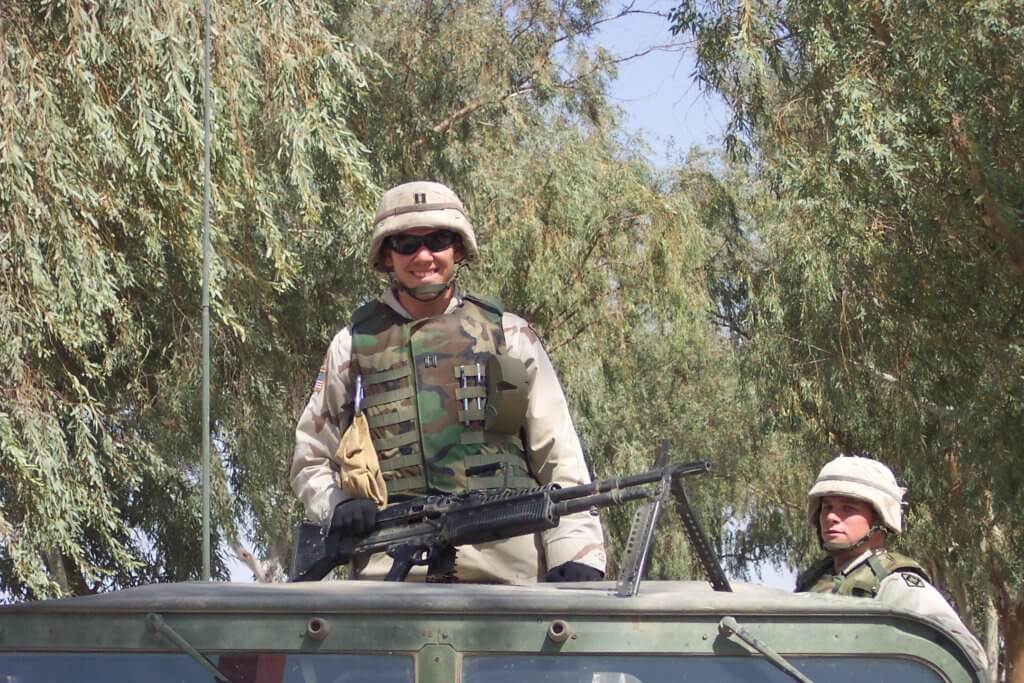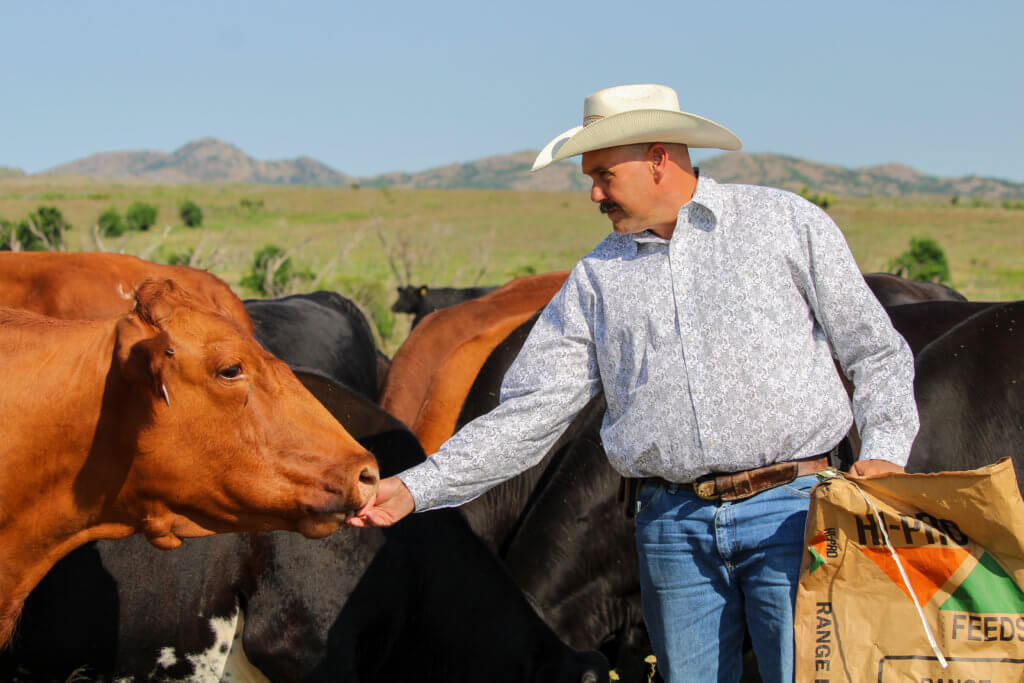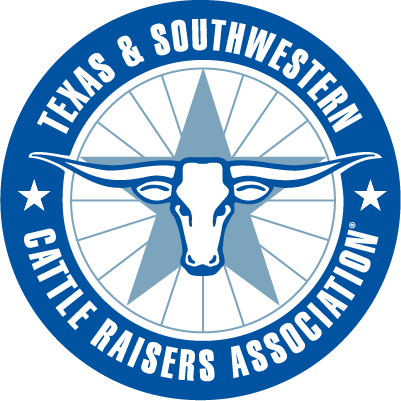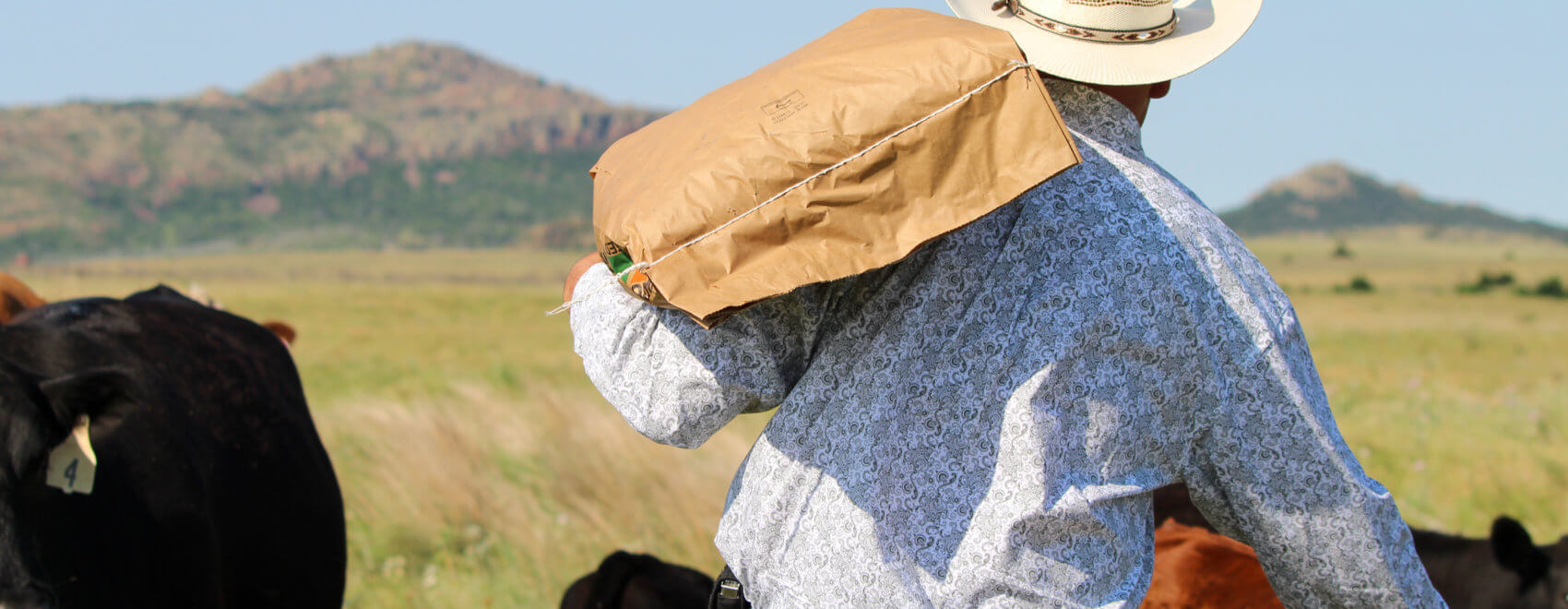After three deployments, Iowa native starts a cow-calf operation in southwestern Oklahoma.
By Katrina Huffstutler
With the Wichita Mountains in the background as the sun sets on an unseasonably mild June day, Texas & Southwestern Cattle Raisers Association member Joel Heinzeroth takes a moment to reflect on how he got here.
“I always kind of saw it as a bookend to my life,” the retired U.S. Army Major says. “I grew up on a farm, served in the Army and I just always wanted to eventually be a rancher and have a place I could call my own.”
Heinzeroth, the last of six kids born to parents Ervin and Carol, was raised on a couple-thousand acres in Iowa where the family grew corn and soybeans and raised hogs and cattle. He loved the farm, but the future looked bleak.
“The problem is, the ’80s were pretty hard,” Heinzeroth says. “So, there wasn’t much chance for me to take it over.”
The red, white and blue
His dad encouraged him to find something else to pursue, so he turned his focus to another love — America. Heinzeroth had always been interested in the military and, at his dad’s urging, got involved in ROTC and applied for the organization’s scholarship, which he received in 1992.
“My family was very patriotic,” Heinzeroth says. “And I’ve always loved being an American. But also, my five brothers and sisters all went to college, and I saw they had so much debt. I realized if I could serve my country, that I could get some money to go to college.”
That sealed the deal. Using the scholarship, he went on to Northwest Missouri State University. After finishing his degree, Heinzeroth was commissioned as a second Lieutenant in the field artillery in 1997 and became active duty.
About that time, Heinzeroth’s dad died in a farm accident, and the family sold out so his mom could move to town. Any remaining hope he might get to come back to the farm he grew up on was gone, but he vowed he would come back to his roots one day — even if it looked a lot differently.
Heinzeroth served 20 years in the Army, and during that time was stationed all over the world including three deployments to Iraq. He loved his time spent serving, especially getting to know people from all parts of the country and all walks of life who bonded together over a love for America.

Back at the ranch
After retiring from the military, Heinzeroth made good on his promise to himself, buying a piece of land and a few cows. He settled on southwestern Oklahoma because he’d been stationed there, and the price of land was much better than in his home state. And once he found a place with mountain views and a 10-acre pond, he knew he’d made the right choice.
“I just fell in love with it here,” he says.
Like most producers starting from scratch, Heinzeroth is beginning small. But even while he works a day job to support his cattle raising habit, he’s got big goals for his operation. And if it takes a while to get there, well, the time will pass anyway.
Heinzeroth admits it’s a tough business to get into from a financial standpoint, but says the sacrifices are worth it. And it’s an endeavor he’d recommend to any veteran.
“If you can get into agriculture — whether that’s raising animals or growing crops — it is so therapeutic for a soldier,” he says. “For me, being around animals is one of those rare things that can counterbalance all the stress I was under during years of combat. As bad as things were for me sometimes in Iraq, the dream of having my own land got me through. And now being back here watching my cattle graze … there’s nothing like it.”

A little help along the way
As Heinzeroth’s military career began to wind down, he started looking for help in pursuing his ranching dream. He applied for one of USDA Farm Service Agency’s beginning farmer loans, and soon learned of another organization that could help — the California-based Farmer Veteran Coalition. Right away, he knew he’d want to be involved.
“The Army is all about, ‘What’s your mission?’” Heinzeroth says. “Well, the coalition’s mission is all about helping those who protected America transition to feeding America.”
Through the coalition’s fellowship fund, he applied for — and received — a $5,000 grant to make a capital purchase. He was able to jumpstart a working facility, buying a squeeze chute and palpation cage.
Forever grateful, he’s paying it forward. He currently serves on an organizing committee to launch an Oklahoma chapter of the Farmer Veteran Coalition.
Of course, as he returned to agriculture, he knew he’d need more than financial support. That’s why he immediately joined Texas & Southwestern Cattle Raisers Association.
“Our way of life is constantly under pressure,” Heinzeroth says. “You need someone on your side, and I’ve always appreciated all the benefits the association has brought me. Not only the brand inspectors and the special rangers, but just the information I get through the magazine and emails and knowing that there’s other people out there. It’s just belonging to a group that has the same passion and everything that I have.”
This story first appeared in the December 2021 issue of The Cattleman magazine.

